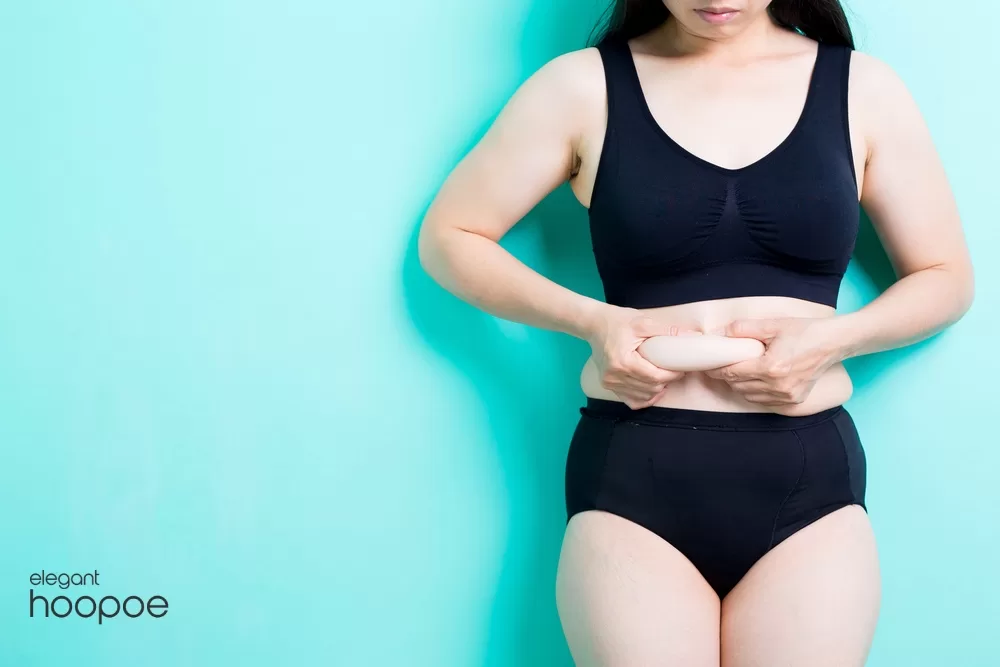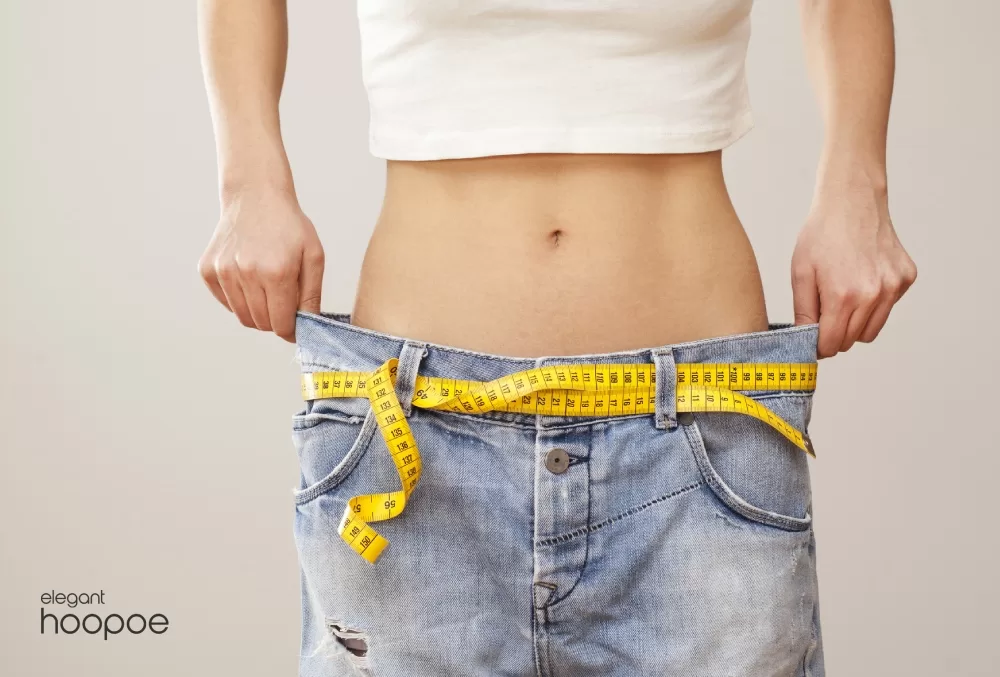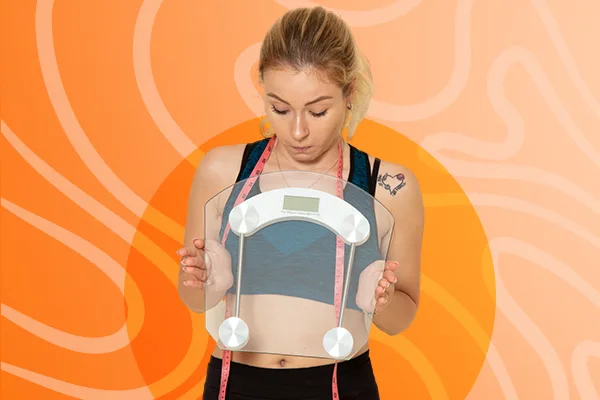How Can You Reduce Subcutaneous Fat Effectively?
Subcutaneous fat is a layer of fat that lies just beneath the skin. It serves important functions in the body, such as energy storage and insulation. However, excessive amounts of subcutaneous fat can lead to health issues. In this comprehensive guide, we will explore the nature of this type of fat pocket, its differences from visceral fat, the causes of its accumulation, its impact on health, and effective strategies for losing it.
What is Subcutaneous Fat?

Subcutaneous fat, also known as “fluffy fat,” is the layer of fat that is found directly beneath the skin. It is easily pinchable and often visible in areas such as the stomach, hips, thighs, and arms. This fat serves several purposes, including energy storage, temperature regulation, organ protection, and connecting the dermis, muscles, and bones.
If you want to lose weight safe and fast you can contact our experts at elegant hoopoe, here in our weight loss clinic in Dubai, we offer a wide range of services for body shaping and weight loss. Our experts are ready to give you a full consulting session on how your journey is going to look like based on your body condition and aesthetic goals.
Subcutaneous Fat vs. Visceral Fat
While fluffy fat lies just beneath the skin, visceral fat is located deep within the body, surrounding the organs. This type of fat is generally harmless, while visceral fat is associated with various health issues. Although having excess subcutaneous fat is often correlated with higher levels of visceral fat, weight loss can help reduce both types of fat.
Causes of Subcutaneous Fat Accumulation

The accumulation of subcutaneous fat is influenced by a combination of factors, including genetics, diet, exercise, and certain medical conditions. Genetic predisposition plays a role in determining the amount of fat a person carries. Unhealthy lifestyle habits, such as a sedentary lifestyle and a high-calorie diet, can also contribute to fat accumulation in different parts of the body. Medical conditions like diabetes and insulin resistance may further exacerbate this situation and make a person overweight.
Impacts on Health
While fluffy fat itself is not inherently harmful, excessive amounts of it can increase the risk of various health issues. Conditions such as high blood pressure, heart disease, diabetes, and obesity are often associated with excess subcutaneous fat. Therefore, it is important to maintain a healthy level of subcutaneous fat to minimize the risk of these health problems.
When attempting to lose fat, it is crucial to avoid common myths and mistakes that can hinder progress. One common misconception is the idea of spot reduction, which suggests that targeting specific areas of the body with exercises can reduce fat in those areas. In reality, overall fat loss is achieved through a combination of a calorie deficit and regular exercise. Focusing on counting calories alone without considering nutrient quality and composition can also limit progress. Additionally, neglecting rest days, mental health, and sleep can hamper weight loss efforts.
Assessing Subcutaneous Fat Levels
To determine whether you have a healthy amount of subcutaneous fat, several measurements and indicators can be used. Body mass index (BMI) provides a general assessment of weight in relation to height, categorizing individuals as underweight, normal weight, overweight, or obese. Waist circumference and waist-to-height ratio are other measurements that can indicate the presence of excess subcutaneous fat. Consulting with a healthcare professional can help interpret these measurements accurately.
How to Lose Subcutaneous Fat?
To effectively lose subcutaneous fat, a combination of a healthy diet and regular exercise is key. Creating a calorie deficit by consuming fewer calories than you burn is essential for fat loss. A balanced diet that includes lean proteins, whole grains, fruits, vegetables, and healthy fats can support weight loss efforts. Engaging in aerobic exercises, strength training, and high-intensity interval training (HIIT) can help burn calories, build muscle, and increase metabolism. Prioritizing rest days, managing stress, and getting adequate sleep are also important for overall health and weight loss.

Please note that the best and safest way to lose fat, is to follow a healthy diet and have regular exercise routine. Other weight loss options which we are going to explore in the next sections might not be good for some individuals with certain conditions.
Subcutaneous Fat removal options
In some cases, individuals may consider cosmetic fat removal procedures to target subcutaneous fat in specific areas. These procedures should be approached with caution and carried out by qualified professionals. Liposuction is a commonly known procedure that removes fat cells through suction. However, new technologies like truSculpt ID offer less invasive alternatives that can selectively remove subcutaneous fat with minimal downtime and discomfort.
Other popular options to reduce fat in different parts of the body are:
Fat freezing
For over two decades, CoolSculpting fat freezing technique was the main non-surgical option to destroy fat pockets mainly in the abdomen area. Cool Sculpting is still one of the most popular devices that can help reduce the excessive amount of fat with this type of technology.
Radio Frequency
Most of modern devices are now using this technology to attack and destroy fat cells. TruSculpt, Venus Bliss and SculpSure are the most popular devices that people would choose to do their treatments with. Now, unlike fat freezing, these machines heat up the target area to a temperature range that is healthy for any other type of cells but fat cells. Treatment with these devices take at least 3 months to show the desired result, but based on each person’s goals this might take less or longer time.
Laser Liposuction
When it comes to losing weight and fat removal options, liposuction is always going to be on the list of the most effective options. However due to the invasive nature of the treatment it pose some risks and side effects like any other type of surgery does. This is why laser liposuction has become so popular among men and women. This procedure is less invasive and does not require big incisions made in the target area. The recovery time is much shorter and most patients can resume their daily routine after a few days of rest.
Conclusion
While subcutaneous fat serves important purposes, excessive amounts can increase the risk of various health conditions. By adopting a balanced diet, engaging in regular exercise, and adopting healthy lifestyle habits, individuals can effectively manage their subcutaneous fat levels and improve overall well-being.
Disclaimer: The information provided in this article is for educational purposes only and should not be considered as medical advice. Please consult with a healthcare professional before making any changes to your diet or exercise routine.






